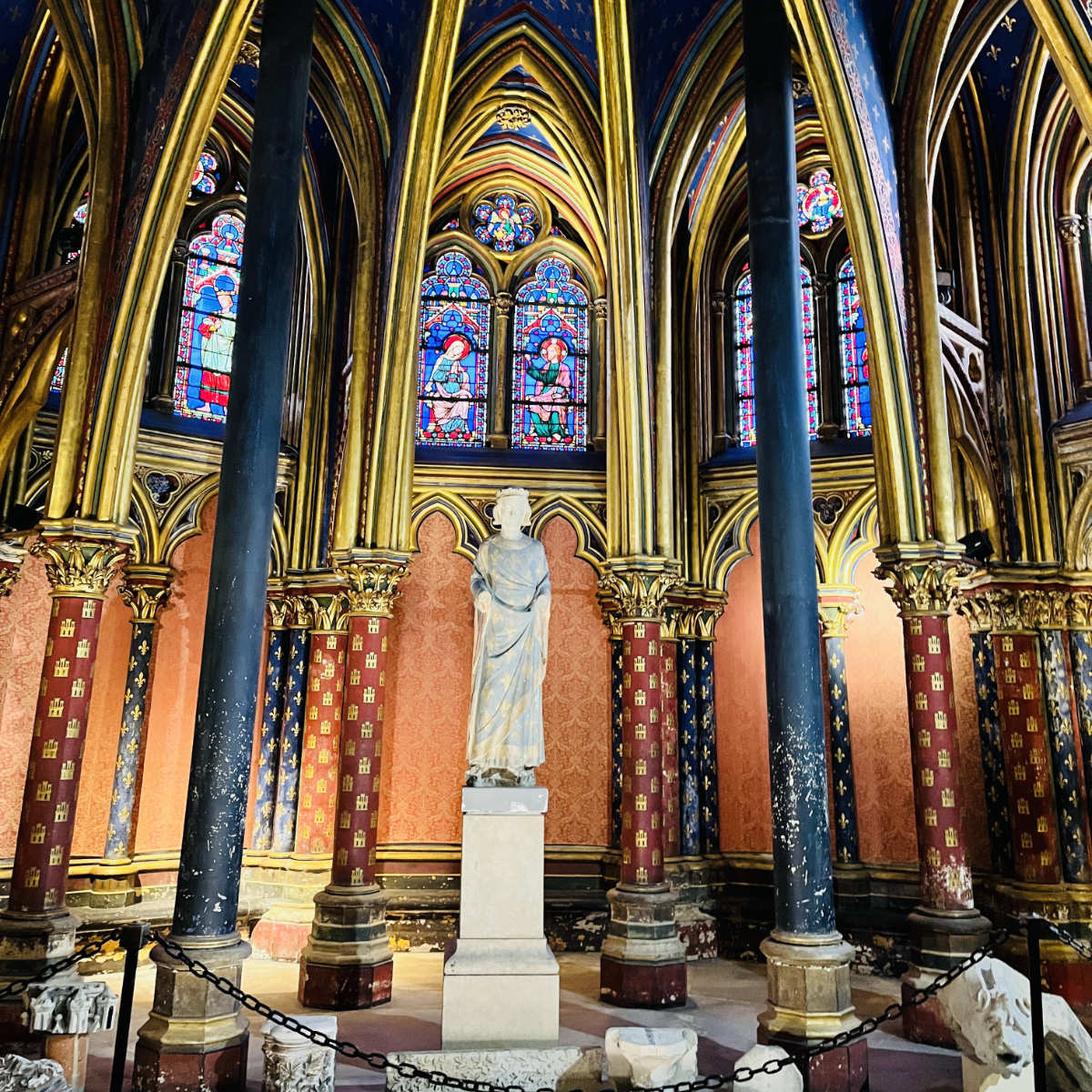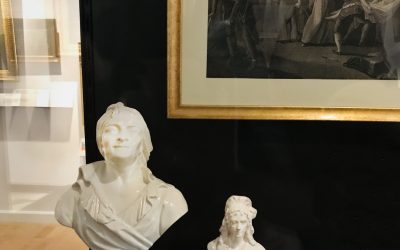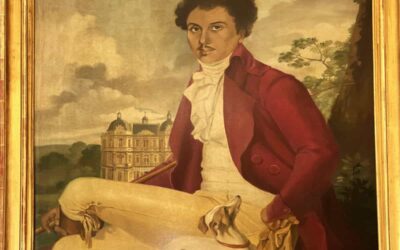Among all the Kings of France, there are many named Louis. But there is only one Saint King Louis IX of France, and it is him that so many places and monuments in France are named after. When a King is granted a sainthood by the Pope, you can bet there’s going to be a lot of stuff named after him!
Often held up as an example in the medieval era, the French King Louis IX actually had a rather complicated life. But what Louis is most famous for is leading multiple crusades to the Holy Land and trying to secure the relics of Jesus Christ.
So let’s find out a few facts about Louis’ history, personal life, family, accomplishments, and more. Allons-y!
| Quick facts | |
|---|---|
| Birth: | 25 April 1214 in Poissy, France |
| Death: | 25 August 1270 at the age of 56 in Tunis, North Africa |
| Parents: | King Louis VIII of France and Blanche de Castille |
| Reign: | 8 November 1226 – 25 August 1270 |
| Marriage and kids: | Margaret of Provence (1234-1270) with whom he had 11 children |
| Famous for: | bringing the Crown of thorns and other relics of Jesus Christ to France, and being canonized as saint |
1. He was born in 1214.
Louis was born on 25 April 1214 in Poissy, a small town outside of Paris. Despite this relatively low-key location, his parents were King Louis VIII of France and Blanche de Castille.
Their marriage had been arranged by Blanche’s powerhouse grandmother, Queen Eleanor of Aquitaine.
Blanche was 12 years old at the time of her marriage, and her husband only a year older. The the marriage had to wait to be consummated, and the couple had their first child in 1205.
In all, they had 4 children before young Louis, who all died young, including a set of twins. The couple would have another 8 children after young Louis, for 13 children in total, however many died young.
2. His parents almost became King and Queen of England.
Intermarriage was common at the time, especially with young Louis’s great grandmother Queen Eleanor of England orchestrating the marriages of her children and grand-children.
On the throne of England was King John (of Magna Carter fame), who was Eleanor’s youngest son. The English nobility (and Robin Hood) were rebelling against King John’s reign and with Blanche’s English ancestry, the English were considering other options
When young Louis 1-year-old, his parents King Louis VIII of France and Blanche, were offered the throne of England. They were never crowned, as with the death of King John in October 1216, the English changed their allegiance back to John’s son.
3. He became King at the age of 12.
When Louis father, King Louis VIII died, it was their 5th child Louis who became King Louis IX. He was merely 12 years old. He was crowned at the Cathedral of Reims, the traditional seat of coronation for French Monarchs.
4. His mother Blanche de Castille ruled as Regent on his behalf.
Because Louis IX was so young, his mother Blanche would rule as Regent of France until he reached maturity.
Queen Blanche was very religious and oversaw the education of her children. She insisted on Latin and lessons in Christian morals for all of them. Her only adult daughter, Isabelle who founded a nunnery, was also canonized by the Catholic church.
Blanche acted as regent twice during the reign of her son, first during his minority from 1226 until 1234. The 2nd time was during his absence in the crusades from 1248 until 1252.
5. He purchased the relics of Jesus.
As King Louis IX grew up, he became a very pious man. And he was rich, as France’s economy was booming. He purchased what is purported to be the Crown of Thorns that Jesus wears while on the cross.
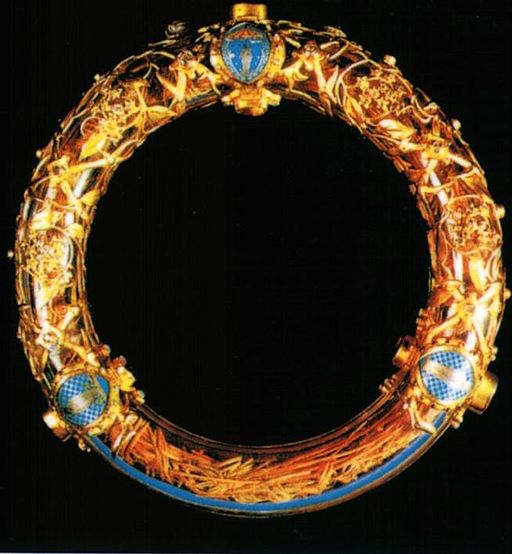
The relics had been sold by Emperor Baudouin II, the last Latin emperor of Constantinople who was seeking to raise funds for his besieged city. He sold them to a Venetian bank and this is how King Louis IX acquired them.
King Louis IX acquired many relics over the years. They were believed to have included:
- the Holy Crown
- the Blood of Christ
- the Holy Cross
- pieces of nails and spearhead
- the Holy Shroud
- hair of the Virgin
- pieces of the Virgin’s veil
- the rod of Moses
6. He built Sainte Chapelle in Paris.
King Louis IX needed a place to showcase his new prized possessions and Saint Chapelle was built in order to hold the holy relics. It is today one of the most beautiful churches in Paris and famous across France.
King Louis IX placed his new treasures within Sainte Chapelle. The most outstanding relics were kept in the large reliquary which sat enthroned in the apse of the Upper chapel.
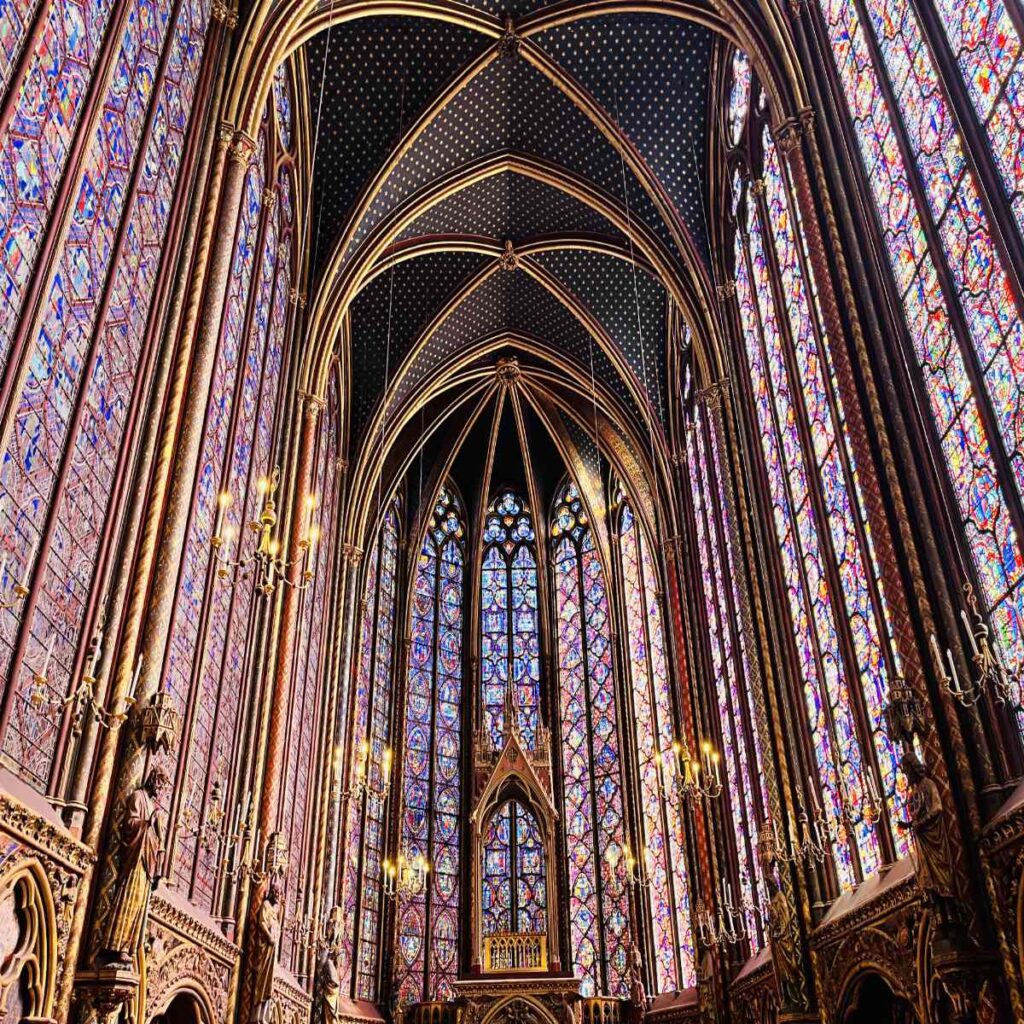
Originally, there were 22 relics that were acquired by Saint-Louis. After much upheaval and the passage of time, there are now only 3 remaining, which are a fragment of the cross, a nail, and the Crown of thorns.
Saint Louis’ crown of thorns was held in Notre Dame de Paris Cathedral and was rescued from the 2019 fire. It is currently in a secure location, until it can be restored to the Cathedral.
7. The relics were very expensive.
The Crown of thorns was thought to have been purchased for around 135,000 livres in 1239, which at the time was about 1/2 of the annual income of France.
The relics were stored in a large and elaborate silver chest, the Grand-Chasse, on which Louis spent a further 100,000 livres. The construction of the Sainte-Chapelle cost much less, around 40,000 livres.
8. He married Margaret of Provence.
On 27 May 1234, King Louis IX married Margaret of Provence. She was one of 4 daughters of the Count of Provence, who were all reputed to be very beautiful as well as rich.
The 2nd daughter Eleanor, then married to the King of England, making the French and English royal houses very closely related.
When their father died without leaving a male heir, King Louis IX had his brother Charles marry his youngest sister-in-law Beatrice who became the Countess of Provence.
The region Provence was theoretically to remain autonomous, but this was the start of Provence and Marseille becoming part of France.
9. He was a Catholic zealot.
King Louis IX was very much inspired by Christian zeal. Enforcing strict Catholic orthodoxy, his laws punished blasphemy by mutilation of the tongue.
He also ordered the burning of 12,000 copies of the Talmud and other important Jewish books during the Disputation of Paris of 1240.
10. He went on the Crusade.
King Louis IX became passionate about participating in the Crusades in the Middle East. His first crusade was the “7th Christian Crusade” in 1248, when he headed to Egypt.
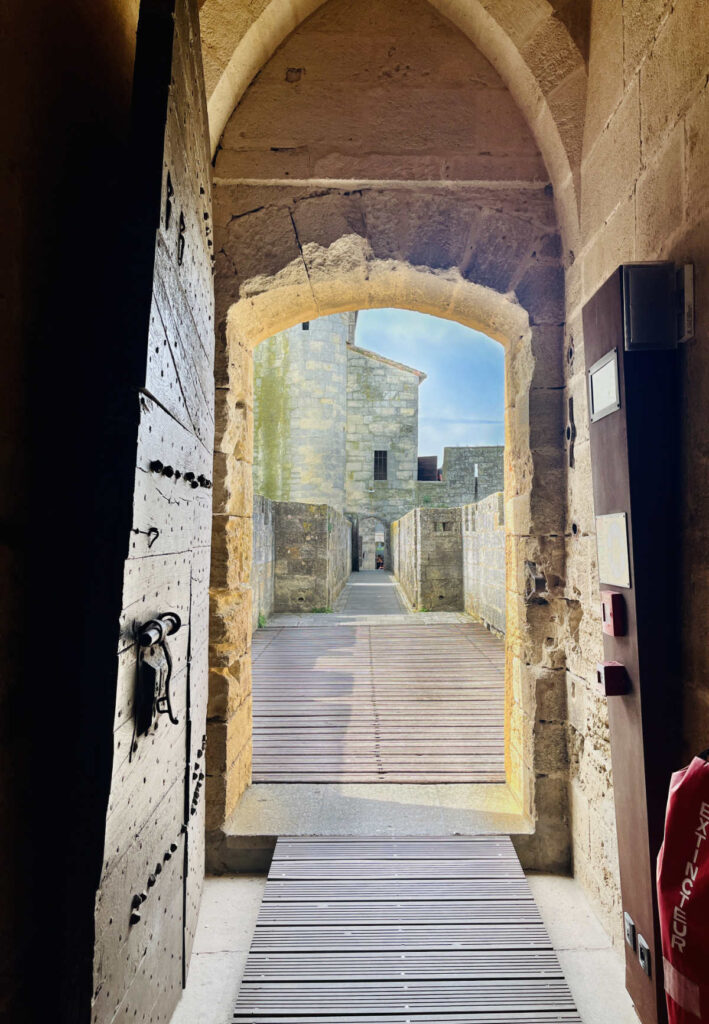
In 1250, Louis IX was defeated at the Battle of Al Mansurah and was captured by the Egyptians. His release was negotiated for a ransom of 400,000 livres tournois and the surrender of the city of Damietta, a port city in Egypt that was under Crusader control.
After being released, Louis went to Jerusalem where he spent 4 years assisting the Knights Templars and other Crusaders. He finally headed back to France in 1254.
11. Louis and Margaret had 11 children.
Despite traveling so much for the crusades, Louis and Margaret had 11 children, some of whom died in infancy. His children included:
- Blanche, died in infancy.
- Isabella, married Theobald II of Navarre.
- Louis, died at 15 years old.
- King Philip III
- John, died in infancy.
- John Tristan, Count of Valois.
- Peter, Count of Perche and Alençon.
- Blanche, married Ferdinand de la Cerda, Infante of Castile
- Margaret, married John I, Duke of Brabant.
- Robert, Count of Clermont. His direct descendant, Henry IV became King when the male line of his brother Philip III died out.
- Agnes, married Robert II, Duke of Burgundy.
12. He built a new base at Aigues-Mortes.
Even after his return to France after the 7th crusade, King Louis IX was interested in going back to the Holy Land. He decided to construct a stronghold on the Mediterranean to reduce his dependancy on the Italian cities that were acting as a staging ground for transporting troops to the Crusades.
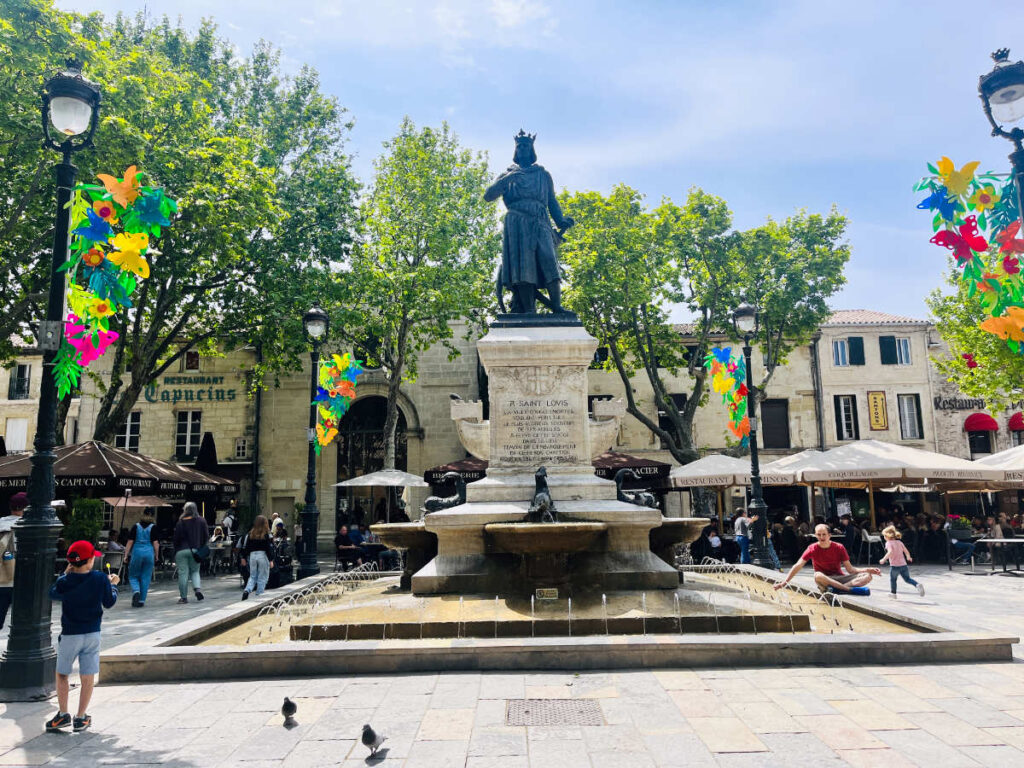
He selected Aigues-Mortes in the south of France for its access to the sea, and the town has been associated with him ever since. Construction of the ramparts started under Louis IX, and continued under his son, Philip III the Bold.
13. He died at the age of 56.
In 1270, King Louis IX decided he wanted to be involved in the “Eighth Crusade”. He headed out to what is now Tunisia. Here however, he died at the age of 56 on 25 August 1270 in Tunis. He died not in battle, but during an epidemic of dysentery that had swept through his army.
As was the tradition at the time, his body was boiled and flesh removed to bring back to France. He is buried in the Basilica of St Denis, the traditional resting place of French royals.
14. His son Philip III inherited his crown.
Known as Philip the Bold, his son Philip III became King of France upon Saint King Louis’s death. Louis had 11 known children, leaving behind many descendants who married into the royal houses of Europe.
The close blood relations between French and English royal houses would eventually lead to the 100 years-war (1337–1453) where both tried to claim the throne of France.
15. He was made a saint 30 years after his death.
Pope Boniface VIII proclaimed King Louis IX a saint in 1297, a mere 30 years after his death. Traditionally the process of canonisation is much longer, however Louis was held up as a model of a “Christian King”.
This was the period of the Crusades, and Louis was considered to be an example to the other European Kings who were being asked to send soldiers and monies to fund the wars in the to the Holy Land. He is now considered one of the most well-known saints of France.

16. Several places and monuments are named after him.
Saint King Louis is the only canonised King of France, so there are many places and monuments named after him.
Among the most famous is Ile Saint Louis in the 4th arrondissement of Paris, as well as the connecting bridge which is named Pont Saint Louis. The city of St. Louis in the United States is also named after Saint King Louis.

If you enjoyed that article, you may like to read about more famous French people throughout history. A bientôt!
